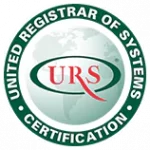Abstract
To better understand the factors that affect low disease activity (DAS28 ≤ 3.2, LDA) in rheumatoid arthritis (RA) and barriers within the UAE, demographic/ treatment data and DAS28 scores were collected through chart reviews of 182 consecutive RA patients seen at a private clinic in Dubai over a 2-month period. Patients were separated into a LDA group and a group comprised of moderate (3.2 < DAS28 < 5.1) or high disease activity (DAS28 ≥ 5.1) (MHDA). We then examined variables that may be associated with LDA and re-examined the MHDA group for barriers. While 97 (53 %) of the 182 patients had achieved the treatment target of DAS28 ≤ 3.2, 85 (47 %) had MHDA. A significantly larger portion of LDA patients had been previously treated with sulfasalazine (36 in LDA vs. 14 in MHDA, P = 0.002) or was presently on biological treatments (24 vs. 9, P = 0.013). For the 85 MHDA patients, 40 (22 % of 182) exhibited resistant disease with 25 (13.7 % of 182) failing their current first tier disease-modifying anti-rheumatic drug (DMARD) treatment or combinations and 15 (8.2 % of 182) failing current anti-TNF or biologic treatment. Reasons listed were primarily socioeconomic with 40 % of the resistant disease group unable to afford biologicals and 52 % of the patientdriven preference group discontinuing DMARDs against professional advice. Going forward, emphasis on the agreement between patient and rheumatologist on treatment, specifically regarding how DMARDs help relieve symptoms and their proper use, could help reduce the percentage of MHDA patients in the UAE.
Keywords Rheumatoid arthritis · Disease activity score · Disease control · Treat to target
Click to view the full article in PDF


